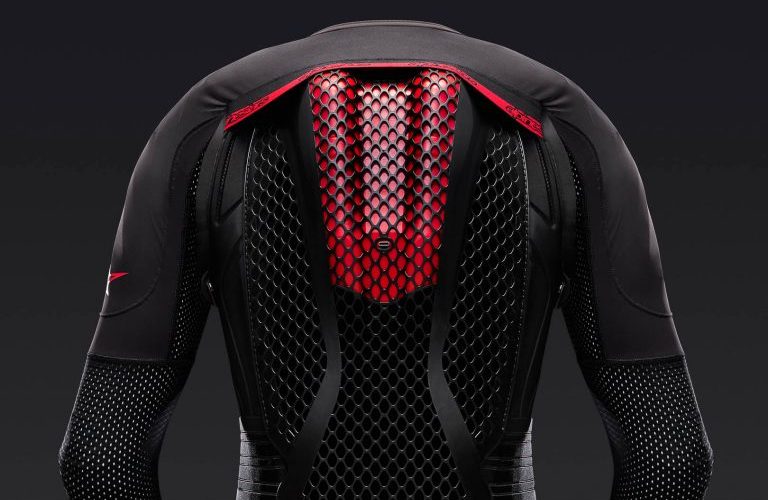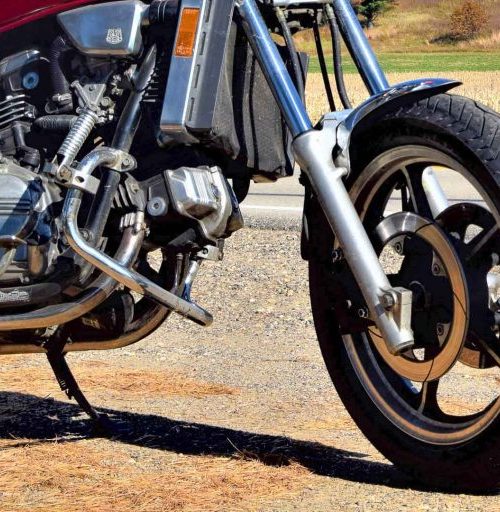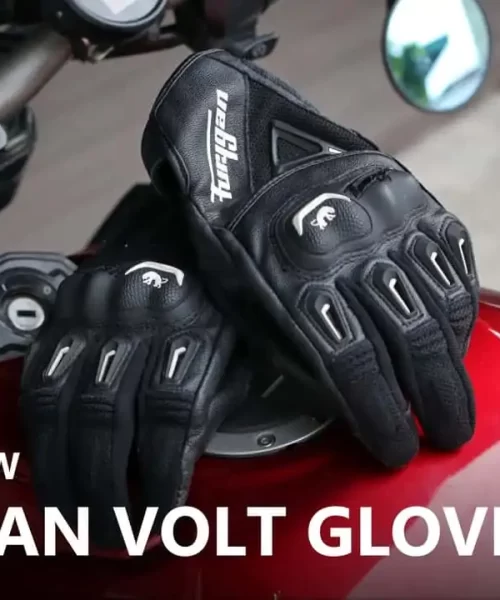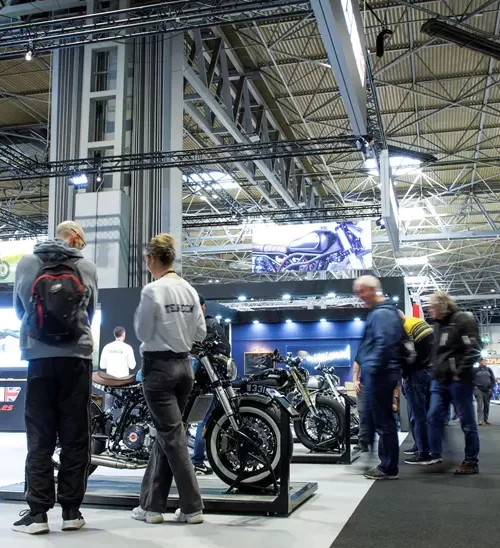Motorcycle safety equipment continues to evolve. It seems like every year new technical features raise the bar by providing additional protection. Arguably, the most exciting recent innovation joining the two-wheeled segment is airbag technology, which Alpinestars began pursuing over 20 years ago. With two decades of research and development in airbag systems under its belt, Alpinestars is upping the ante with its new standalone Tech-Air 10 system, offering some of the most comprehensive protection currently available.
With an MSRP of $1000, the Alpinestars Tech-Air 10 ascends to the top of the Tech-Air family, which includes the street-focused Tech-Air 3 (available Fall 2022), the multi-purpose Tech-Air 5, and Tech-Air Off-Road (available early 2023). Racetrack use is the primary mission of the Tech-Air 10, and it will eventually replace the current Tech-Air Race. Fortunately, Alpinestars representatives have assured us that older T-A Race units will be supported for the foreseeable future.
What’s the hubbub about the new Alpinestars Tech-Air 10? Additional hip protection tested and proven at the highest levels of motorcycle racing in MotoGP.
If you’ve seen a mighty tumble from any Alpinestars-wearing GP stars, you’ll notice that their airbag systems not only protect their upper torsos, but also provide hip and thigh coverage, which are prone to smacking the pavement during crashes.
To sample the new Tech-Air 10, we headed off to the technical Sonoma Raceway, spinning some laps on a Yamaha YZF-R7 during the Yamaha R/World event hosted by Z2 Trackdays.
Next Generation Tech-Air
Until now, all motorcycle airbag systems guarded the upper torso, typically offering coverage to the shoulders, back, and chest in one form or another. While the Alpinestars Tech-Air 10 achieves all that, it takes things further with hip and thigh protection, requiring a new design approach.
At a glance, we notice that the standalone Tech-Air 10 airbag system and its redesigned back protector are integrated into a washable, long-sleeve, thigh-high pseudo base layer via a series of snaps, pockets, and zips.
Owners can remove the Tech-Air 10’s airbag components from the garment for washing, which isn’t something we can do with the vest-style Tech-Air systems. My Tech-Air 5 has been known to enjoy a delicate and time-consuming sponge bath after taking on a particular funk.

Because the Tech-Air 10 is a self-contained system, it can be worn under any 1- or 2-piece race suit, with extra room around the wearer’s chest (4 cm) and thighs (2 cm) to ensure safe airbag deployment. Alpinestars Tech-Air Compatible suits differ from traditional suits, with specific cuts and additional accordion paneling to allow airbag expansion. Taking it a step further, the latest Tech-Air suits offer accordion paneling farther down the hips and a pocket on the inner arm for the modular LED panel.
All new for 2022 is how the airbag bladders extend downward, covering the hips and thigh. A longer, passive CE Level 2 back protector adds coverage to the coccyx (tailbone), and a more significant portion of the chest is also protected. A’stars says that the extra airbag coverage reduces bodily impacts by up to 95 percent.
Due to the greater air volume needed to inflate the bladders, the Tech-Air 10 expends both argon canisters when deploying; T-A Race owners will note that they have two deployments available. Users cannot repack the Tech-Air 10; you’ll need to ship the unit off to Alpinestars and have the canisters replaced for $199. The airbags are suitable for up to three deployments before replacement is required. That runs $399, and includes new canisters.
Now would be a good time to recap protection, which is rated CE Level 2 in the back, hips, and chest with the airbag deployed. According to Alpinestars, an activated Tech-Air 10 provides the same impact reduction as 18 passive CE Level 2 back protectors.
A new waistbelt activates the system and features a remote Velcro LED panel, eliminating the need for the device to be directly connected to a suit. The remote LED also allows flexibility. Riders can keep it attached to the belt, stash it in a dedicated inner-arm pocket available on the latest A’stars leathers, or find a convenient place on the motorcycle.
Be sure to stick the LED back on the waistband when recharging the Tech-Air 10, as it’ll charge LED and T-A 10 simultaneously. A full charge will take roughly four hours and net you 24 hours of riding time. If you’re in a time crunch, a one-hour charge will get you six hours—plenty for a track day.
The rest of the technology is largely familiar to those experienced with the Tech-Air Race. A dozen sensors (three tri-axial accelerometers and a tri-axial gyroscope) are housed in the back protector and continuously cross-check the rider’s every move. Years of data collection have honed the algorithm to achieve its goal of deploying moments before a crash, allowing the airbag to absorb the most significant initial impacts. Things happen fast, and the Tech-Air units take between 20 and 40 milliseconds to deploy, depending on the garment size. For context, the blink of an eye takes 140 milliseconds.
Alpinestars constantly collects incident data and updates the algorithm, pushing out updates via the Tech-Air app. That same app allows owners to swap between two riding modes—Race and Street. When in Race mode, the system will arm once you exceed 37 mph for 10 seconds. Street mode is always armed, mainly due to the stop-and-go nature of road riding, retaining protection should you be rear-ended while stopped.
Superhero Spandex
Donning the Alpinestars Tech-Air 10 is a unique experience because we now wear an airbag-onesie. While some might forgo using base layers under the T-A 10, and there are benefits to that on hot days, I found that rocking both a top and bottom increased comfort and helped pull it on and off after subsequent rides.
Now, a moment on fitment—everyone is unique, and you must follow sizing guides correctly. While the garment is imminently stretchable and doesn’t restrict arm or leg movement, the crucial waist-to-shoulder measurement matters most to avoid mobility issues. Picking a size too small will seem fine, until you assume the riding position.
For those wondering what you’ll do when nature calls, Alpinestars has considered that with a handy-dandy access flap.
There is a different feel to wearing the Tech-Air 10, as opposed to having the system installed in a suit like Tech-Air Race or wearing the vest-style Tech-Air 5. Wearing the T-A 10 is comparable to a compression base layer. When sized correctly, it becomes an extension of your body. The sleeves have thumb-loops to avoid getting bunched up while slipping your suit sleeves on. Once done, just let cuff sit around your wrists as you would normally.
A thin base layer material improves fitment in areas like the shoulders and armpits. That’s where the Tech-Air 5 can bunch up when you’re not meticulously donning the suit and vest.
On that note, always check that the airbag bladders are flat and not folded—an essential maintenance tip for any Alpinestars Tech-Air system. The only negatives I experienced with comfort and fitment can be aimed at the neck lining, which did chafe my bare skin—another reason that I opt for a base layer up top.
Another positive benefit is the increased airflow. Due to the redistribution of the bladders, I felt a noticeable increase in airflow.
The Tech-Air Race, 5, and 3 systems truly embody the word vest—your ribcage is covered by non-breathable airbag material. However, the Tech-Air 10’s bulkier back protector does make pulling a suit over my shoulders a little more complicated than usual; having a buddy on hand alleviates the problem. Colleagues that aren’t as broad-shouldered as I didn’t have issues, and the time-honored chicken dance is still an effective strategy to pull a suit off.
The spandex base layer allows the T-A 10 to become modular and compatible with various suits, but there is more on the horizon. Future Alpinestars suits will allow the airbag unit from the spandex chassis to be installed in their leathers, not unlike the Tech-Air Race.
Owners should know that the Tech-Air 10 will deactivate itself if left completely stationary for 10 minutes. Conveniently, subtle movements such as breathing will keep the device armed. It is critical to remember not to store the T-A 10 with its waist belt connected, as it will drain the battery.
Alpinestars Tech-Air 10: Stepping on Up
There is no denying that motorcycling has inherent risks, and wearing high-quality safety equipment is one of the many ways to minimize the consequences of a mishap. The Alpinestars Tech-Air 10 airbag is a significant step forward in impact protection that simply can’t be overlooked if you’re actively doing track days, club racing, or any other form of aggressive riding.
Alpinestars Tech-Air 10 Fast Facts
- Sizes: XS – 3XL
- Color: Black/Bright Red
- Protection: CE Level 2 for hips, chest, and back
Alpinestars Tech-Air 10 Price: $1000 MSRP











![Scorpion Covert Hoodie Review [Motorcycle Jacket Alternative]](https://motogeartalk.com/wp-content/uploads/2023/11/scorpion-covert-hoodie-review-technical-motorcycle-jacket-apparel-2-768x512-1-500x512.jpg)


![2022 Yamaha MT-07 Buyer’s Guide [Specs, Photos, Prices, and Colors]](https://motogeartalk.com/wp-content/uploads/2023/11/2022-yamaha-mt-07-buyers-guide-specs-photos-prices-colors-7-768x512-1-500x512.jpg)